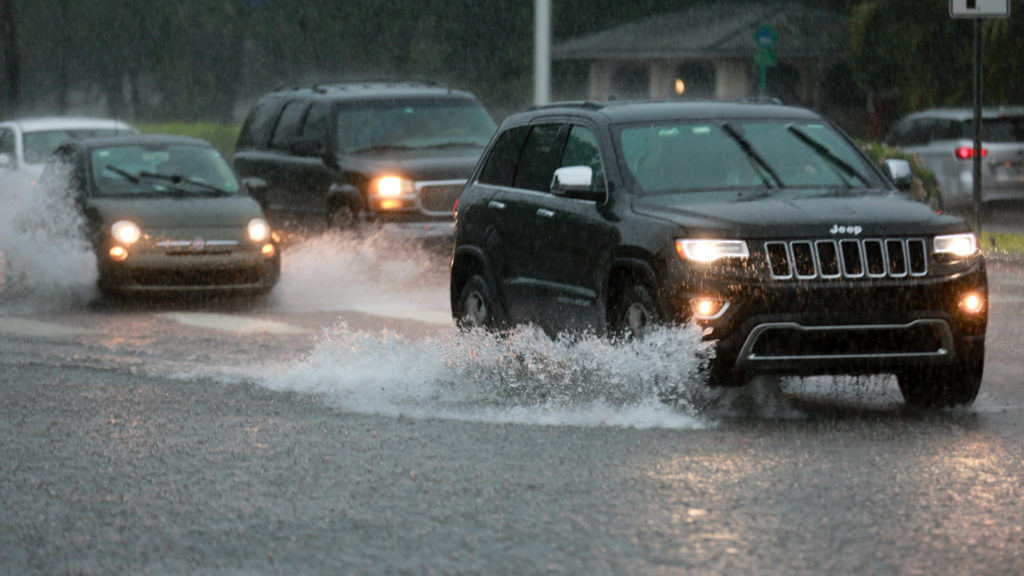Sea Level Rise Calls KB’s Stormwater Plan Into Question
Tony WintonJuly 15, 2019

Cars drive through flooded streets on Harbor Drive in Key Biscayne, June 16, 2019 (Key News/Tony Winton)
The flooding threat to Key Biscayne drew new attention this week with federal warnings on sea level rise, raising the question of whether the Village’s current $25 million dollar Stormwater Master Plan will be enough to address what experts are saying is a critical problem.
On Wednesday, the National Oceanic and Atmospheric Administration predicted a record level of “sunny day” floods for the area around Virginia Key. A decade from now, the agency predicted as many as five severe tidal flooding events a year. The number of lesser floods is also expected to increase.
Key Biscayne’s Stormwater Master Plan, which dates to 2011, does not specifically account for sea level rise, said Jake Ozyman, the Village public works chief. The document, updated in 2015 by the engineering firm Tetra Tech, does not even attempt to address all flood concerns, but instead focuses on problem areas.
As more data comes in about rising seas, there is concern the island’s plan needs to be updated, said Luis de la Cruz, a former Village Council member and chair of the Village’s 2040 Strategic Vision Board.
“We are going to have to raise our seawalls,” he said, adding the $25 million figure is likely no longer realistic.
“We are looking at more money than that,” he said.
While a review of the plan continues, Ozyman said the Village is now requiring that engineers address sea level rise when designing specific projects.
In addition, Council members will be asked to consider increases in stormwater user fees to keep pace with maintenance requirements, which Village Manager Andrea Agha has said are inadequate to maintain even the current system.
The first project is a $3.5 million pump station at the Key Biscayne K-8 Center public school. Agha has said it will take about two years to complete. De la Cruz says the station will be a critical test of whether a more aggressive network of pumps can help the Village get water out of the streets when floods arrive.
He noted that because high tides are already just at the level of the island’s lowest storm grates, the best that can be achieved is to get the water off the land as quickly as possible after a flood event.
Also part of Agha’s 2020 budget is a plan to fund a resiliency coordinator to help the Village manage its response to sea level rise. Agha wants to use an inter-local agreement with Miami-Dade County or the City of Miami Beach to bring on the needed expertise, a move that de la Cruz praised.
“That’s a fantastic move,” he said.


